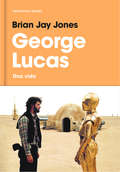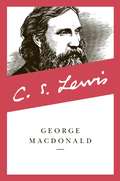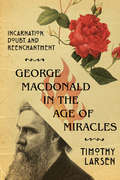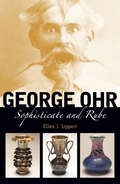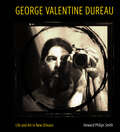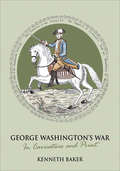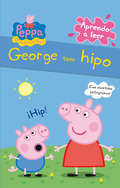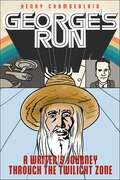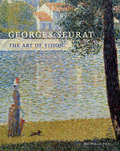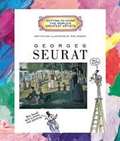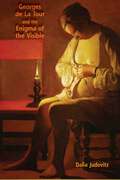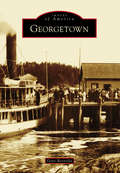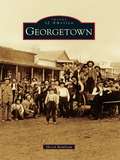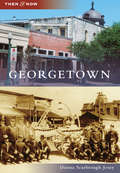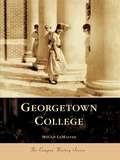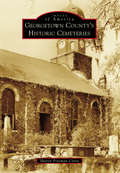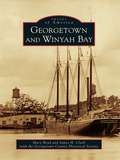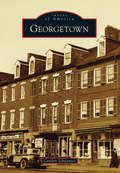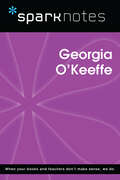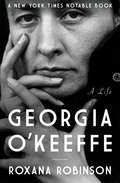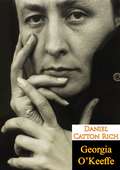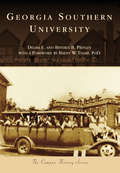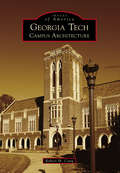- Table View
- List View
George Lucas: Una vida
by Brian Jay JonesLa biografía más completa jamás escrita sobre uno de los cineastas más admirados e influyentes de los últimos cincuenta años: Georges Lucas. El 25 de mayo de 1977 se estrenó en apenas cuarenta salas estadounidenses un film con todos los números para fracasar. Sin embargo, pronto mereció grandiosos titulares hasta convertirse en un fenómeno de taquilla que cambió de un plumazo la manera de producir, anunciar y rentabilizar películas. La cinta se titulaba Star Wars y su creador era un tal George Lucas. El cineasta aún volvería a dar el golpe con la saga de Indiana Jones y, no contento con ello, llegó a forjar pequeños imperios: Lucasfilm, THX, Industrial Light & Magic, Pixar. En esta biografía, tanto colegas como competidores de Lucas ofrecen una mirada exhaustiva sobre la vida y los métodos de trabajo de un hombre que transformó la manera de hacer cine y de verlo. Reseñas:«Todo en la trayectoria de Lucas en el cine, desde sus inicios hasta su actual estatus de leyenda, todo está aquí. Los retratos que ofrecen colegas, rivales, mentores y amigos son brutalmente honestos. Una biografía indispensable.»Rolling Stone «Un libro adictivo. Jones retrata a la perfección la presión asfixiante del creador, los encontronazos con los estudios y el baile constante con el fracaso que precedieron a obras maestras como American Graffiti o Star Wars.»BBC «Una biografía clara y veraz, donde hasta el más mínimo detalle sorprende.»The New York Times «Como si de un aguerrido arqueólogo se tratara, Jones sale victorioso del reto, llevando bajo el brazo un relato formidablemente completo de la vida y obra de George Lucas.»Washington Post «Con su prosa hipnótica y sus investigaciones en profundidad, este libro gustará hasta a los seguidores más exigentes de Lucas.»Boston Globe «Incluso los años de formación del director están retratados con maestría. También las reflexiones e interioridades de cómo funciona la industria del cine (y cómo la cambió Lucas) se nos aparecen como una aventura trepidante.»Chicago Tribune
George MacDonald (Collected Letters Of C. S. Lewis Ser.)
by C. S. LewisIn this collection selected by C. S. Lewis are 365 selections from MacDonald's inspiring and challenging writings.
George MacDonald in the Age of Miracles: Incarnation, Doubt, and Reenchantment (Hansen Lectureship Series)
by Timothy LarsenThe Bible is full of miracles. Yet how do we make sense of them today? And where might we see miracles in our own lives? In this installment of the Hansen Lectureship series, historian and theologian Timothy Larsen considers the legacy of George MacDonald, the Victorian Scottish author and minister who is best known for his pioneering fantasy literature, which influenced authors such as C. S. Lewis, J. R. R. Tolkien, G. K. Chesterton, and Madeleine L'Engle. Larsen explores how, throughout his life and writings, MacDonald sought to counteract skepticism, unbelief, naturalism, and materialism and to herald instead the reality of the miraculous, the supernatural, the wondrous, and the realm of the spirit. The Hansen Lectureship series offers accessible and insightful reflections by Wheaton College faculty members on the transformative work of the Wade Center authors.
George Ohr: Sophisticate and Rube
by Ellen J. LippertThe late nineteenth-century Biloxi potter, George Ohr (1857–1918), was considered an eccentric in his time but has emerged as a major figure in American art since the discovery of thousands of examples of his work in the 1960s. Currently, Ohr is celebrated as a solitary genius who foreshadowed modern art movements. While an intriguing narrative, this view offers a narrow understanding of the man and his work that has hindered serious consideration. Ellen J. Lippert, in her expansive study of Ohr and his Gilded Age context, counters this fable. The tumultuous historical moment that Ohr inhabited was a formative force in his life and work. Using primary documentation, Lippert identifies specific cultural changes that had the most impact on Ohr. Developments in visual display and the altered role of artists, the southerner redefined in the wake of the Civil War, interest in handicraft as an alternative to rampant mass production, emerging tenets of social thought seeking to remedy worker exploitation, and new assessments of morals and beauty as a result of collapsed ideals all played into the positioning Ohr purposefully designed for himself. The second part of Lippert's study applies these observations to Ohr's body of work, interpreting his stylistic originality to be expressions of the contradictions and oppositions particular to late nineteenth-century America. Ohr threw his inspiration into being both the sophisticate and the “rube,” the commercial huckster and the selfless artist, the socialist and the individualist, the “old-fashioned” craftsman and the “artist-genius.” He created art pottery as both a salable commodity and a priceless creation. His work could be ugly and deformed (or even obscene) and beautiful. Lippert reveals that far from isolated, Ohr and his creations were very much products of his inspired engagement with the late nineteenth century.
George Pérez (Biographix #6)
by Patrick L. HamiltonBorn in the South Bronx to Puerto Rican parents, artist and writer George Pérez (1954–2022) cut his teeth in the 1970s as an artist at Marvel who worked on lesser titles like The Deadly Hands of Kung Fu and Creatures on the Loose, and then mainstays like Fantastic Four and The Avengers. In the 1980s, Pérez jumped ship to DC where he helped turn The New Teen Titans into a top-selling title and cocreated Crisis on Infinite Earths, which marked the publisher’s fiftieth anniversary and consolidated its sprawling universe. As writer and artist, Pérez relaunched DC’s Wonder Woman, a run that later inspired much of the 2017 film.Though Pérez’s style is highly recognizable, his contributions to comic art and history have not been fully acknowledged. In George Pérez, author Patrick L. Hamilton addresses this neglect, first, by discussing Pérez’s artistic style within the context of Bronze Age superhero art, and second, by analyzing Pérez’s work for its representations of race, disability, and gender. Though he struggled with deadlines and health issues in the 1990s, Pérez would reintroduce himself and his work to a new generation of comics fans with a return to Marvel’s The Avengers, as well as attempts at various creator-owned comics, the last of these being Sirens from Boom! Studios in 2014. Throughout his career, Pérez established a dynamic and minutely detailed style of comic art that was both unique and influential.
George Valentine Dureau: Life and Art in New Orleans
by Howard Philips SmithNew Orleans artist George Valentine Dureau (1930–2014) has always been an enigma. His status as an important artist gained momentum beginning with his first exhibition at the New Orleans Museum of Art, then the Isaac Delgado Museum of Art, in the mid-1960s. Not only did his career undergo a meteoric rise, but his work proved at once controversial and provocative, nuanced and groundbreaking. Critics and collectors embraced his bold images, describing them as sexual, sensual, exploitative, erotic, iconoclastic, and innovative. Beneath the surface, Dureau was even more complex as a person and persona, as he crafted a sensational character out of his artistic acumen. His reputation dimmed after his death, but in recent years his importance, and that of the New Orleans art scene he occupied, has once again been recognized. George Valentine Dureau: Life and Art in New Orleans reassembles the pieces of Dureau’s puzzle-work life. The complexity of his life came together in the studio, where he created some of the most important artworks of the latter twentieth century. This lush publication features 100 large-format photographic plates, most of which have never been seen or published and surprisingly some in color. There are more than 200 illustrations and two essays to accompany the plates, along with a special section devoted to the artists and artwork of 1980s New Orleans, featuring hundreds of additional photographs, and several appendices of supplementary materials, such as interview transcripts, a timeline of Dureau’s life and career, a map of important locations, and a section on relevant art publications, invitations, and posters.
George Washington's Eye: Landscape, Architecture, and Design at Mount Vernon
by Joseph MancaExplore the beauty and history of Mount Vernon—and the inquisitive, independent mind of its famous architect and landscape designer.Winner of the John Brinkerhoff Jackson Book Prize of the Foundation for Landscape ArchitectureOn the banks of the Potomac River, Mount Vernon stands, with its iconic portico boasting breathtaking views and with a landscape to rival the great gardens of Europe, as a monument to George Washington’s artistic and creative efforts. More than one million people visit Mount Vernon each year—drawn to the stature and beauty of Washington’s family estate.Art historian Joseph Manca systematically examines Mount Vernon—its stylistic, moral, and historical dimensions—offering a complete picture of this national treasure and the man behind its enduring design. Manca brings to light a Washington deeply influenced by his wide travels in colonial America, with a broader architectural knowledge than previously suspected, and with a philosophy that informed his aesthetic sensibility. Washington believed that design choices and personal character mesh to form an ethic of virtue and fulfillment and that art is inextricably linked with moral and social concerns. Manca examines how these ideas shaped the material culture of Mount Vernon.Based on careful study of Washington’s personal diaries and correspondence and on the lively accounts of visitors to his estate, this richly illustrated book introduces a George Washington unfamiliar to many readers—an avid art collector, amateur architect, and leading landscape designer of his time.
George Washington's War: In Caricature and Print
by Kenneth BakerA Revolutionary War history told through eighteenth-century illustrations: &“Utterly absorbing&” (The Times, London). Americans are steeped in the history of the American Revolution, but often the fog of myth shrouds the reality. In these pages, the path to war is starkly documented by British caricatures of politicians and generals—for the most part favorable to the Colonists. For George III, Lord North, and Britain, the war was a disaster that need not have happened. The problems of coping with a country five thousand miles away with a tradition of representative government, a free press, and a spirit of independence were just too much. But they, together with Generals Howe, Burgoyne, Cornwallis, and others, were mercilessly lampooned. Washington, the hero, is spared, although there are surprising and dark elements to the American victory illustrated here. Using prints and caricatures from the period—some never before published—and drawing on his own experience in politics, Kenneth Baker provides vivid and memorable images that illustrate these extraordinary historical events.
George tiene hipo (Peppa Pig. Pictogramas)
by Varios AutoresPeppa y George tienen muchas ganas de salir a jugar al jardín. Así que desayunan tan rápido que a George le entra hipo. Descubre cómo Peppa consigue que se le pase.
George's Run: A Writer's Journey through the Twilight Zone
by Henry ChamberlainGeorge Clayton Johnson was an up-and-coming short story writer who broke into Hollywood in a big way when he co-wrote the screenplay for Ocean’s Eleven. More legendary works followed, including Logan’s Run and classic scripts for shows like The Twilight Zone and Star Trek. In the meantime, he forged friendships with some of the era’s most visionary science fiction writers, including Ray Bradbury, Theodore Sturgeon, Richard Matheson, and Rod Serling. Later in life, Johnson befriended comics journalist and artist Henry Chamberlain, and the two had long chats about his amazing life and career. Now Chamberlain pays tribute to his late friend in the graphic novel George’s Run, which brings Johnson’s creative milieu to life in vividly illustrated color panels. The result feels less like reading a conventional biography and more like sitting in on an intimate conversation between friends as they recollect key moments in pop culture history, as well as the colorful band of writers known as the “Rat Pack of Science Fiction.”
Georges Seurat
by Michelle FoaThis revelatory study of Georges Seurat (1859-1891) explores the artist's profound interest in theories of visual perception and analyzes how they influenced his celebrated seascape, urban, and suburban scenes. While Seurat is known for his innovative use of color theory to develop his pointillist technique, this book is the first to underscore the centrality of diverse ideas about vision to his seascapes, figural paintings, and drawings. Michelle Foa highlights the importance of the scientist Hermann von Helmholtz, whose work on the physiology of vision directly shaped the artist's approach. Foa contends that Seurat's body of work constitutes a far-reaching investigation into various modes of visual engagement with the world and into the different states of mind that visual experiences can produce. Foa's analysis also brings to light Seurat's sustained exploration of long-standing and new forms of illusionism in art. Beautifully illustrated with more than 140 paintings and drawings, this book serves as an essential reference on Seurat.
Georges Seurat (Getting To Know Artists Series)
by Mike Venezia Georges SeuratClever illustrations and story lines, together with full-color reproductions of actual paintings, give children a light yet realistic overview of each artist's life and style in these fun and educational books. <P><P> Were his brilliant paintings a trick of the eye or a stroke of genius? Get to know the life and work of Post-Impressionist Georges Seurat -- inventor of Pointillism.
Georges de La Tour and the Enigma of the Visible
by Dalia JudovitzNot rediscovered until the twentieth century, the works of Georges de La Tour retain an aura of mystery. At first sight, his paintings suggest a veritable celebration of light and the visible world, but this is deceptive. The familiarity of visual experience blinds the beholder to a deeper understanding of the meanings associated with vision and the visible in the early modern period.By exploring the representations of light, vision, and the visible in La Tour’s works, this interdisciplinary study examines the nature of painting and its artistic, religious, and philosophical implications. In the wake of iconoclastic outbreaks and consequent Catholic call for the revitalization of religious imagery, La Tour paints familiar objects of visible reality that also serve as emblems of an invisible, spiritual reality. Like the books in his paintings, asking to be read, La Tour’s paintings ask not just to be seen as visual depictions but to be deciphered as instruments of insight. In figuring faith as spiritual passion and illumination, La Tour’s paintings test the bounds of the pictorial image, attempting to depict what painting cannot ultimately show: words, hearing, time, movement, changes of heart.La Tour’s emphasis on spiritual insight opens up broader artistic, philosophical, and conceptual reflections on the conditions of possibility of the pictorial medium. By scrutinizing what is seen and how, and by questioning the position of the beholder, his works revitalize critical discussion of the nature of painting and its engagements with the visible world.
Georgetown
by Gene ReynoldsGeorgetown is an island located between the historic Kennebec and Sheepscot Rivers. Incorporated in l716, it was accessible from the mainland only by various ferries and local fishing boats until a bridge was erected in 1898. Maritime endeavors like fishing and shipbuilding emerged as the major industries in town very early on and continue to be a primary means of employment today. Georgetown encompasses several beautiful villages, all of which retain a feeling of an older time and place. As the area continued to grow as a destination for artists in the early 1900s, several notable photographers congregated at the Seguinland Hotel, now known as Grey Havens Inn, to discuss starting a school that would ignite the development of commercial photography. One of the most recognizable parts of Georgetown is Reid State Park, which attracts visitors with its beautiful beaches. Today, residents take pride in the new historical society building, firehouse, post office, and restored community center.
Georgetown
by Sheryl RambeauAt the beginning of the 20th century, historian Herman Daniel Jerrett noted that there was "no other part of the world with a placer seam formation filled with small gold-bearing veins and veinlets, so great or so crumpled, crushed and its fold mashed together, as that on the Georgetown Divide." First a simple base and supply camp for early miners, Georgetown survived despite repeated challenges from fires and economic slumps. Now rebuilt, it offers physical proof of the hardy pioneer spirit that settled this small town in the Sierra Nevada foothills. Historic Main Street offers numerous examples of "fireproof" architectural styles, more hopeful than realistic, including the 100-foot-wide Main Street itself, unique in Mother Lode mining towns.
Georgetown (Then and Now)
by Donna Scarbrough JoseyFounded in 1848, Georgetown's development was driven by cattle, cotton, railroads, and education. Author and Georgetown native Donna Scarbrough Josey brings the city's history to life through this remarkable collection of vintage photographs from the Georgetown Heritage Society, Williamson County Sun newspaper, Southwestern University, and private collections. Readers will explore the beautifully restored courthouse square, a railroad district revived for the 21st century, the oldest neighborhoods, Southwestern University, and storied places along the San Gabriel River.
Georgetown College (Campus History)
by Megan LemasterThe mighty columns of historic Giddings Hall reflect the rich traditions of Georgetown College. With ties stretching back to 1787, Georgetown College offers a liberal arts education "providing students with a climate for achievement with aChristian context." As the first Baptist college west of the Allegehenies, the school survived not only the turmoil of war but also a devastating fire in the midst of economic depression. Because of the faith and endurance of dedicated trustees, faculty, and local citizens, Georgetown College developed into an institution that celebrates alegacy of scholarship and Christian principles. This volume's nostalgic photographs and recent snapshots highlight Georgetown's worlds of academia, athletics, student life, and religious activity.
Georgetown County's Historic Cemeteries (Images of America)
by Sharon Freeman CoreyGeorgetown is the third-oldest city in the state of South Carolina and the county seat of Georgetown County. Named for King George III of England, Georgetown County lies on the Atlantic Ocean surrounding Winyah Bay. The county's rivers--Santee, Sampit, Black, Pee Dee, and Waccamaw--were named by the Native Americans who were the area's first inhabitants. In 1732, the land was settled by the English, French, and Scots. Their first staple crop was indigo, but rice soon became the indisputable king of the Lowcountry and flourished in the marshes along the banks of the county's many rivers, creeks, and bays. By 1850, the county contained more than 175 rice plantations. The plantation era ended with the Civil War, the loss of enslaved labor, and a series of devastating hurricanes. Georgetown County's history will forever remain a part of the live oaks and Spanish moss found throughout the county and is retold in every cemetery within Images of America: Georgetown County's Historic Cemeteries.
Georgetown and Winyah Bay
by James H. Clark Mary Boyd Georgetown County Historical SocietyGeorgetown lies just inland of the Atlantic Ocean at the upper reaches of Winyah Bay. For eons, five rivers have flowed through the countryside, offering lifeblood to a town and its people. Founded in 1729, Georgetown has seen the heights of prosperity in the indigo and rice crops and the depths of despair in the aftermath of the Civil War. Many famous names have connections here, such as Francis Marion, better known as the Swamp Fox; the Marquis de Lafayette; Thomas Lynch, a signer of the Declaration of Independence; and Vice Pres. Aaron Burr, just to name a few. Presidents and other dignitaries have visited with us over these 200-plus years and millions have luxuriated in the waters of our nearby beaches for generations.
Georgetown: Scoundrels, Sinners And Spies (Images of America)
by Canden SchwantesGeorgetown, a thriving neighborhood in the nation's capital, was established in 1751 as an independent city. As the land to its east was being developed into Washington, DC, the once sleepy river town grew and evolved. George Washington's adopted descendants lived down the street from where Kennedy lived before Camelot; Julia Child walked past the home of Robert Todd Lincoln; and a successful community of free black Americans was built around the corner from what had previously been a slave market. Georgetown depicts the history of a community whose roots span far beyond the prestigious university and upper-class neighborhood for which it is known. The images capture mansions and slums, thriving businesses and crumbling facades, an industrial revolution, and the closing of the C&O Canal.
Georgia O'Keeffe (SparkNotes Biography Guide)
by SparkNotesGeorgia O'Keeffe (SparkNotes Biography Guide) Making the reading experience fun! SparkNotes Biography Guides examine the lives of historical luminaries, from Alexander the Great to Virginia Woolf. Each biography guide includes:An examination of the historical context in which the person lived A summary of the person&’s life and achievements A glossary of important terms, people, and events An in-depth look at the key epochs in the person&’s career Study questions and essay topics A review test Suggestions for further reading Whether you&’re a student of history or just a student cramming for a history exam, SparkNotes Biography guides are a reliable, thorough, and readable resource.
Georgia O'Keeffe: A Life (Biografia Circe Ser.)
by Roxana RobinsonA New York Times Notable Book: Roxana Robinson's definitive biography of Georgia O'Keeffe is a rich and revealing portrait of the iconic American artist. Artist Georgia O'Keeffe was born into a family of strong Midwestern farmwomen and taught self-reliance at an early age. Coming of age in the modern era, she went on to defy the social conventions of her time and lead a successful and emancipated life full of creativity, feminism, and austerity that has taken on mythic proportion. Roxana Robinson's multilayered book explores O'Keeffe's journey to personal and professional independence, the evolution of her art, and her most influential relationships. Written with the cooperation of O'Keeffe's family, and using sources unavailable during her lifetime, this biography presents the artist's own voice through her letters to family and friends. Robinson follows O'Keeffe from her childhood on a Wisconsin farm to the center of the New York art scene where she met her husband, photographer Alfred Stieglitz. Stieglitz championed O'Keeffe, exhibiting her work at his gallery and drawing her into his inner circle of early modernists. But O'Keeffe, ever caught between the demands of love and art, left New York to find inspiration in the New Mexico desert where she created some of her most renowned work. This vividly rendered, beautifully written account succeeds in capturing the passions, controversies, and contradictions in the life of an extraordinary woman.
Georgia O’Keeffe
by Daniel Catton RichThis is the definitive book on Georgia O'Keeffe's work--selected, designed, and supervised by the artist herself, with her own text. It includes 108 magnificent full-color plates, some never reproduced elsewhere or publicly shown, and spans O'Keeffe's entire career: from her intense, personal abstractions to her unique depictions of nature--flowers, bones, rocks, and landscapes.
Georgia Southern University
by Brent Tharp Delma E. Presley Beverly B. PresleyIn 1906, the founders of what would become Georgia Southern University pledged to build a college that would prepare students to succeed in a changing world. The First District Agricultural and Mechanical School served well the needs of women and men who lived in a farm-based economy. As the 20th century unfolded, the college did something that is rare in the history of higher education: it changed its name five times to meet the educational needs of its citizens. A university since 1990, Georgia Southern provides opportunities for a diverse and inclusive student body that now exceeds 20,000. Each year, graduates earn diplomas at the bachelors, masters, and doctoral levels. Today, the road to the future begins on a path that learners long have traveled: it leads up through a green forest to Sweetheart Circle. Old A&M has become one of the nation's distinctive universities. Those who study and teach here say the campus is the most beautiful in America. At its heart is a pair of neatly coupled lakes, framed by historic willows, live oaks, and stately pines. The light of learning still shines brightly from Statesboro's highest hill.
Georgia Tech: Campus Architecture (Images of America)
by Robert M. CraigThe architectural development of Georgia Tech began as a core of Victorian-era buildings sited around a campus green and Tech Tower. During the subsequent Beaux-Arts era, designers (who were also members of the architecture faculty) added traditionally styled buildings, with many of them in a pseudo-Jacobean collegiate redbrick style. Early Modernist Paul Heffernan led an architectural revolution in his academic village of functionalist buildings on campus--an aesthetic that inspired additional International Style campus buildings. Formalist, Brutalist, and Post-Modern architecture followed, and when Georgia Tech was selected as the Olympic Village for the 1996 Summer Olympics, new residence halls were added to the campus. Between 1994 and 2008, Georgia Tech president G. Wayne Clough stewarded over $1 billion in capital improvements at the school, notably engaging midtown Atlanta with the development of Technology Square. The landscape design by recent campus planners is especially noteworthy, featuring a purposeful designation of open spaces, accommodations for pedestrian perambulations, and public art. What might have developed into a prosaic assemblage of academic and research buildings has instead evolved into a remarkably competent assemblage of aesthetically pleasing architecture.
